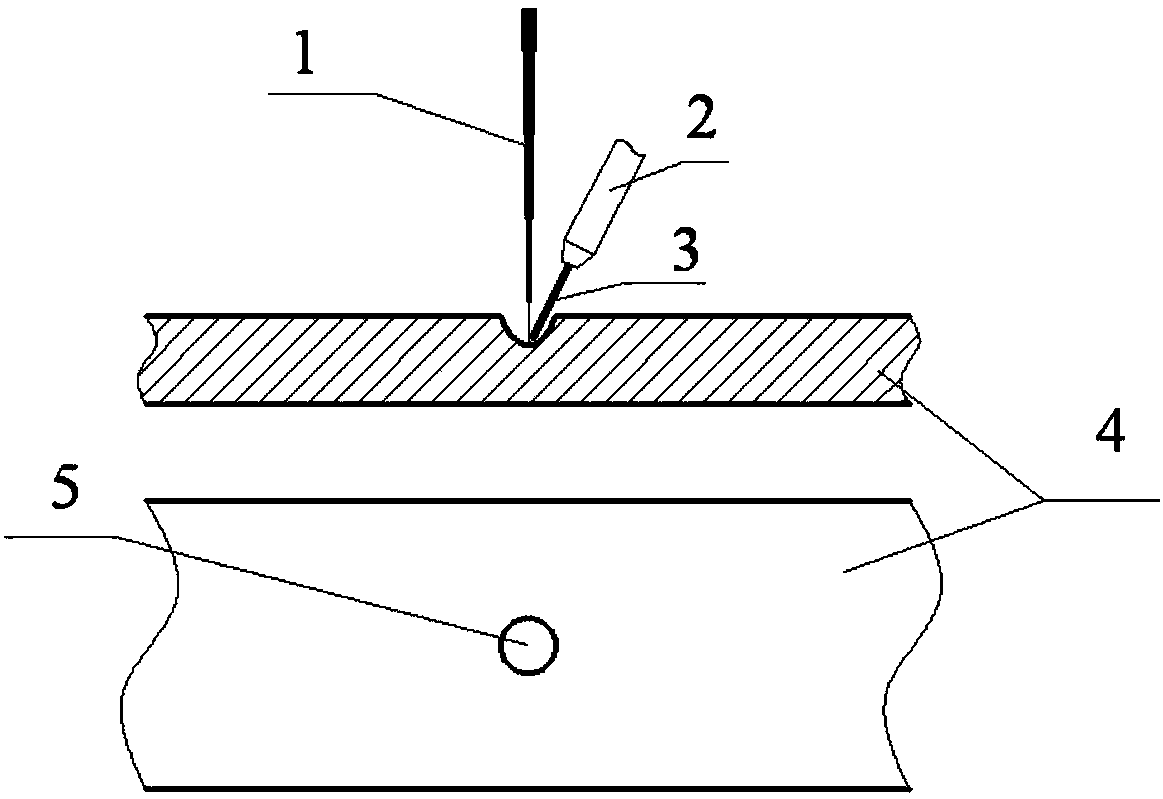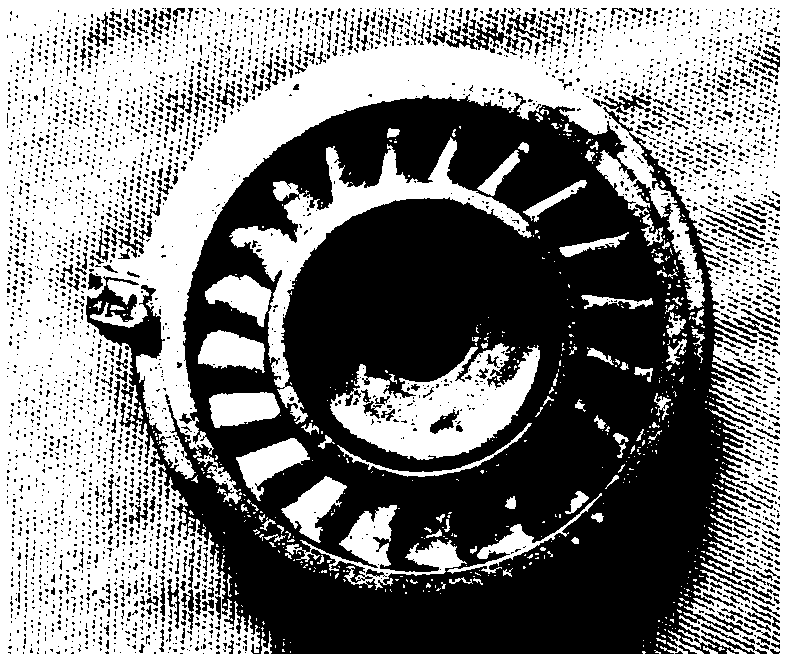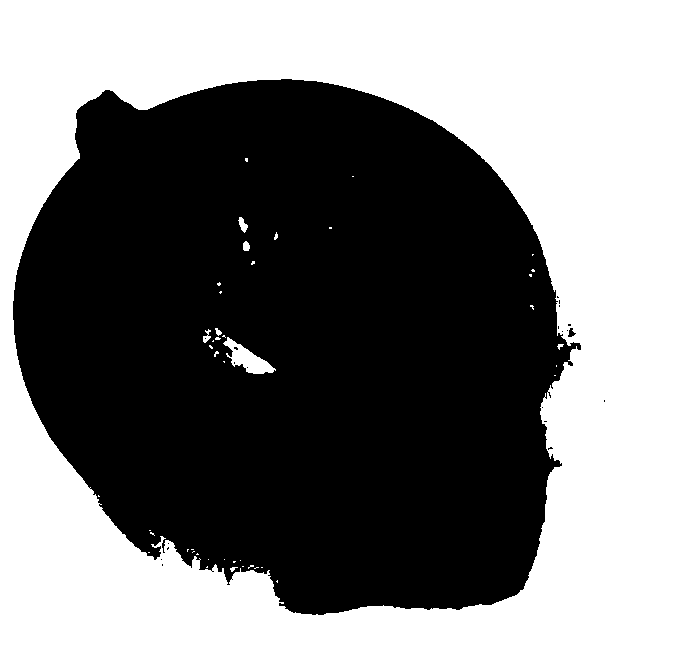Method for repairing flaws of titanium-aluminum intermetallic compound castings
A technology for intermetallic compounds and casting defects. It is applied in the field of repairing titanium-aluminum intermetallic compound casting defects. It can solve the problems of difficult parts repair operations, poor atmosphere protection conditions, and inability to use casting defects, etc., to achieve slow heat loss and cooling. Slow to avoid the effect of repairing defects
- Summary
- Abstract
- Description
- Claims
- Application Information
AI Technical Summary
Problems solved by technology
Method used
Image
Examples
Embodiment 1
[0039] figure 2 Shown is a titanium-aluminum intermetallic compound (Ti-48Al-2Cr-2Nb) vortex casting. After the casting is hot isostatically pressed, the closure of internal looseness and other defects leads to surface pit defects. The pit defect size is 3mm and the depth is 2mm.
[0040] The casting was repaired by electron beam fuse deposition repair method. The specific steps are:
[0041] The surface of the pit defect of the vortex generator is mechanically polished to reveal a metallic luster. After polishing, the size of the area to be repaired is 5mm in diameter on the upper surface, 2.5mm in depth, and a circular arc transition on the bottom surface;
[0042]Ti-48Al-2Cr-2Nb filaments with the same composition and a diameter of 1.0 mm are used as filling materials. The wire is connected to a TA0 pure titanium wire with a diameter of 1.0mm to form a complete wire by resistance welding, and only the part of the Ti-48Al-2Cr-2Nb wire is used for repair. The wire is vacu...
PUM
| Property | Measurement | Unit |
|---|---|---|
| diameter | aaaaa | aaaaa |
| diameter | aaaaa | aaaaa |
Abstract
Description
Claims
Application Information
 Login to View More
Login to View More - R&D
- Intellectual Property
- Life Sciences
- Materials
- Tech Scout
- Unparalleled Data Quality
- Higher Quality Content
- 60% Fewer Hallucinations
Browse by: Latest US Patents, China's latest patents, Technical Efficacy Thesaurus, Application Domain, Technology Topic, Popular Technical Reports.
© 2025 PatSnap. All rights reserved.Legal|Privacy policy|Modern Slavery Act Transparency Statement|Sitemap|About US| Contact US: help@patsnap.com



